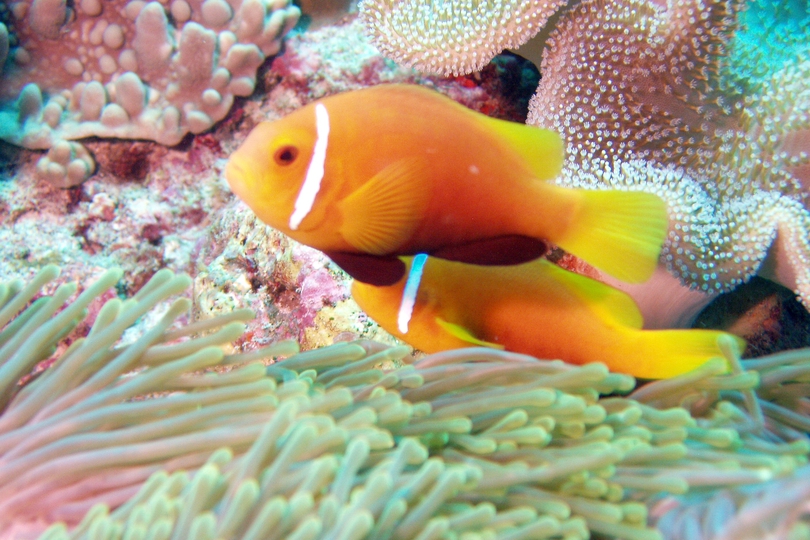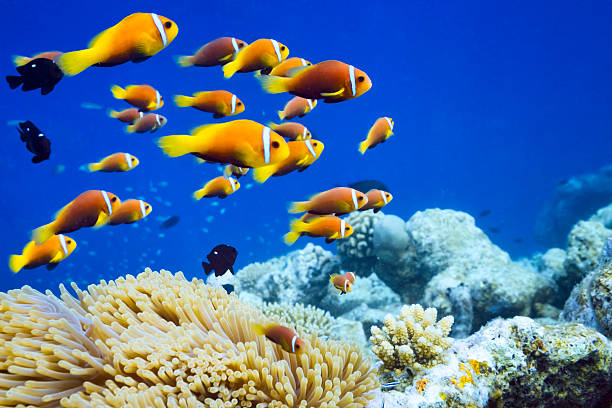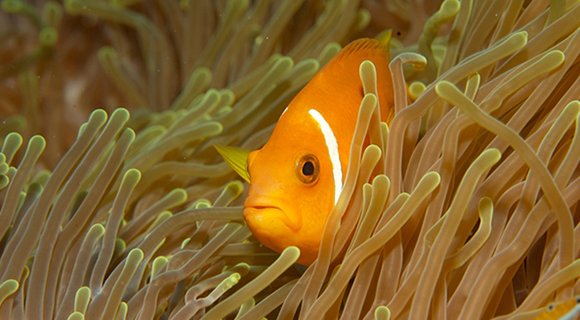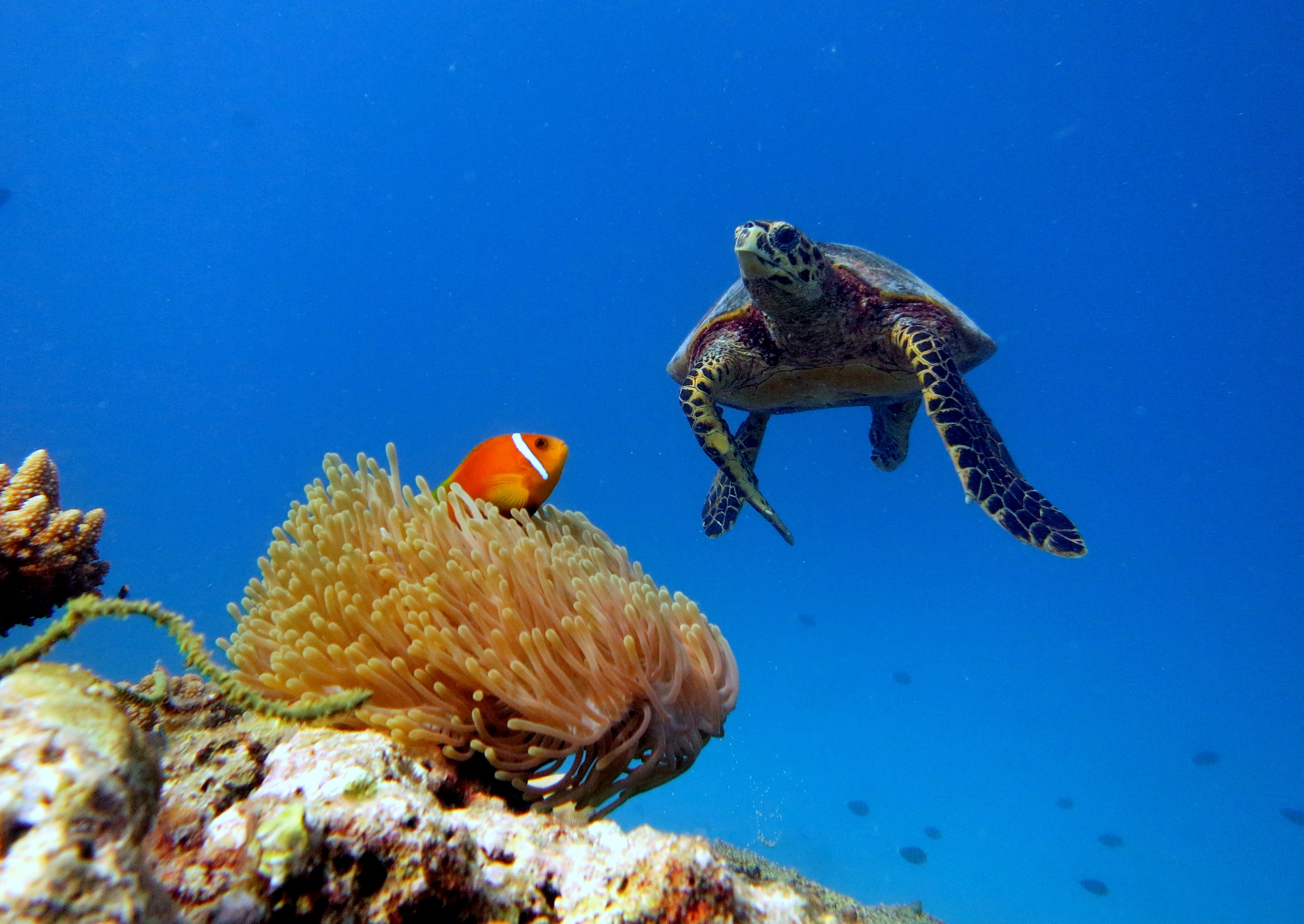Exploring Clownfish in the Maldives: A Colorful Wonder of the Coral Reefs

The Maldives is world-renowned for its crystal-clear waters, breathtaking coral reefs, and an abundance of diverse marine life. Among its vibrant underwater inhabitants, clownfish stand out as one of the most popular and iconic species. Known for their striking orange and white coloration, clownfish attract divers and snorkelers from around the world. This article explores the fascinating world of clownfish in the Maldives, highlighting where to find them, their unique behaviors, and conservation efforts to protect them and their delicate coral reef habitats.
---
1. Clownfish: An Overview
Clownfish, or anemonefish, belong to the *Amphiprioninae* subfamily, with over 30 recognized species. These fish are best known for their mutualistic relationship with sea anemones. The bright orange and white-striped Maldives clownfish (*Amphiprion nigripes*) is native to the Indian Ocean, including the reefs of the Maldives. They are relatively small, growing to around 4 inches (10 cm) in length, and live in large groups, often observed swimming around their host anemone for shelter and protection.

---
2. Where to Find Clownfish in the Maldives
Clownfish are found in the shallow coral reefs of the Maldives, particularly in areas rich in anemones. Divers and snorkelers have high chances of spotting clownfish while exploring popular dive sites such as:
- Banana Reef: One of the first dive sites discovered in the Maldives, Banana Reef is home to stunning coral formations and a plethora of marine life, including clownfish.
- Maaya Thila: Located in the North Ari Atoll, Maaya Thila is known for its rich biodiversity, where divers often spot clownfish in their natural habitat.
- Manta Point: This dive site in the North Malé Atoll is known for manta rays, but it’s also a great place to spot clownfish around sea anemones.
Other dive spots in the South Ari Atoll, Baa Atoll, and other regions also provide excellent opportunities to see these charming fish.

---
3. Understanding the Clownfish-Anemone Symbiosis
The clownfish and sea anemone enjoy a unique symbiotic relationship. Clownfish use anemones for protection; their bodies have a special mucus layer that prevents them from getting stung. This relationship is mutually beneficial, as the clownfish provide food for the anemone in the form of waste and help defend it from predators. This fascinating relationship showcases the balance of marine ecosystems in the Maldives' coral reefs.
---
4. Conservation Challenges
The Maldives’ coral reefs are under pressure due to climate change, coral bleaching, and human activities. These challenges pose a threat to clownfish and their habitats. Coral bleaching, caused by rising sea temperatures, damages the reefs and affects the anemones that clownfish rely on for survival. Conservation initiatives in the Maldives are working to mitigate these impacts, with efforts including:
- Coral Restoration Projects: These projects involve replanting coral fragments to restore damaged reefs.
- Marine Protected Areas (MPAs): Establishing MPAs restricts fishing and tourism activities in certain areas, allowing the reefs and their inhabitants to recover.
- Educational Campaigns: Local organizations and resorts often educate tourists on sustainable diving and snorkeling practices to reduce human impact on reefs.
By supporting these initiatives, visitors to the Maldives can contribute to preserving the delicate balance of the reef ecosystem.

---
5. How to See Clownfish Responsibly
When snorkeling or diving with clownfish in the Maldives, it’s essential to practice eco-friendly behavior to avoid damaging the coral reef:
- Avoid Touching: Do not touch clownfish or their anemones, as this can disturb them and damage the reef.
- Use Reef-Safe Sunscreen: Many sunscreens contain chemicals harmful to corals. Opt for reef-safe options to protect marine life.
- Mind Your Fin Kicks: Be mindful of your movements in shallow reefs to avoid accidentally breaking coral.
---
6. Best Time to Visit for Clownfish Sightings
The Maldives is a year-round destination for marine life enthusiasts, but the best time to see clownfish and other vibrant sea life is during the dry season, from November to April. During these months, water visibility is at its peak, providing optimal conditions for underwater photography and wildlife observation.
---
7. Frequently Asked Questions
- Are clownfish in the Maldives endangered?
While clownfish are not currently classified as endangered, they are vulnerable due to the fragility of coral reefs. Climate change and reef degradation remain significant threats.
- Can I see clownfish while snorkeling, or do I need to dive?
Clownfish can be seen both while snorkeling and diving in shallow reefs across the Maldives. However, diving offers more opportunities to see clownfish up close in their natural habitat.
- What makes Maldives clownfish different from other species?
The Maldives clownfish, *Amphiprion nigripes*, is unique to the Indian Ocean and features a distinctive coloration compared to other species, often displaying a brighter orange hue.
---
Final Thoughts
The Maldives is a paradise for marine life lovers, and seeing clownfish in their natural habitat is a highlight for many visitors. By learning about these captivating fish and practicing responsible tourism, travelers can help protect the Maldives' incredible biodiversity for future generations. Whether you're a beginner snorkeler or an experienced diver, the Maldives’ underwater world promises an unforgettable experience filled with wonder and beauty.
For more articles on marine life in the Maldives, tips on eco-friendly travel, and insights into conservation efforts, stay tuned to our blog and share your own stories of marine adventures!
- News & Updates
- Travel Destinations
- Maldivian Tourism
- Healthcare & Wellness
- Lifestyle
- Personal Stories & Experiences
- Sports
- Water Sports & Adventure
- Accommodation & Stays
- Outdoor Activities
- Local Culture & Heritage
- Spa & Wellness
- Transportation
- Altre informazioni
- Fishes and Marine Species



